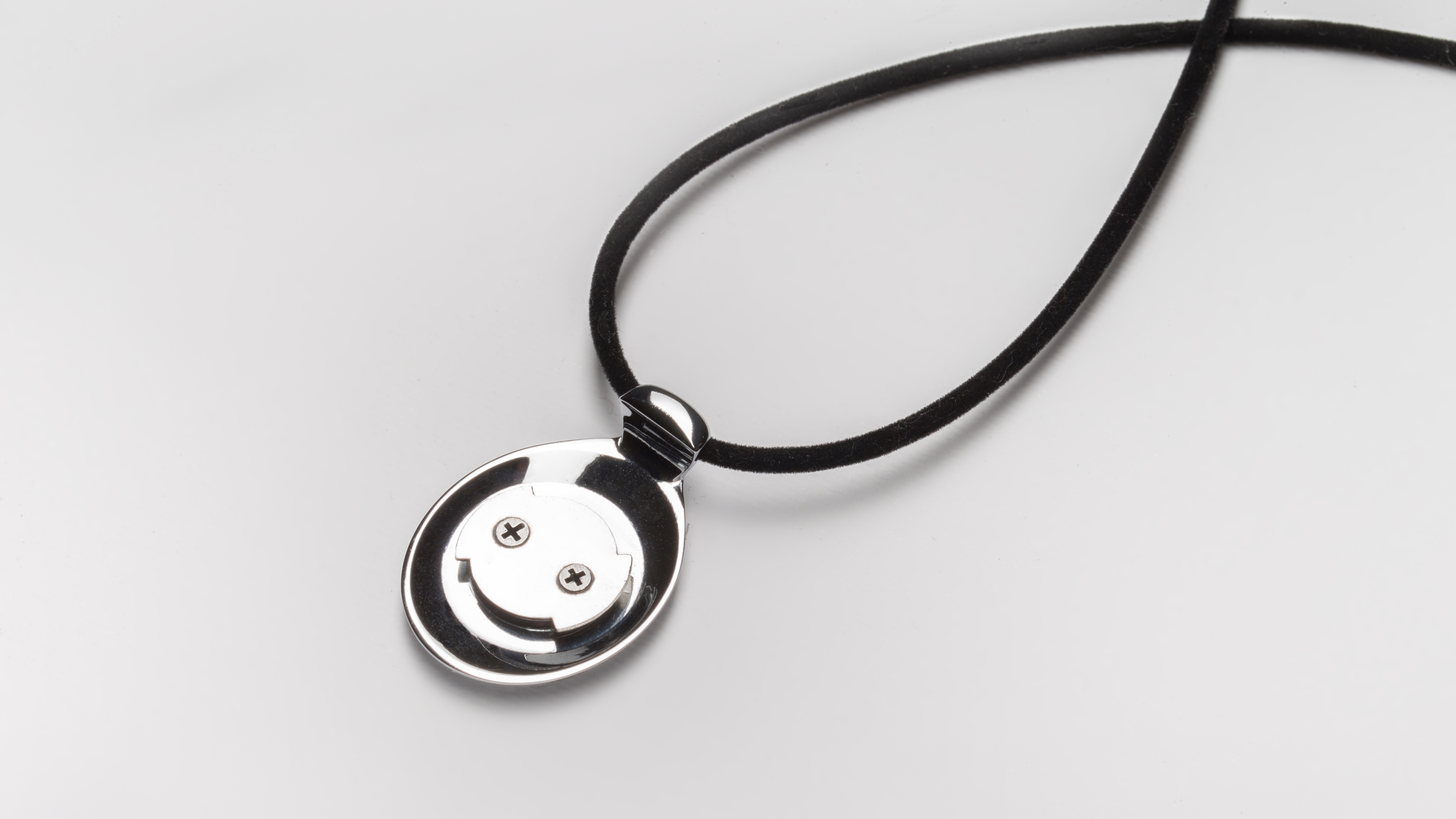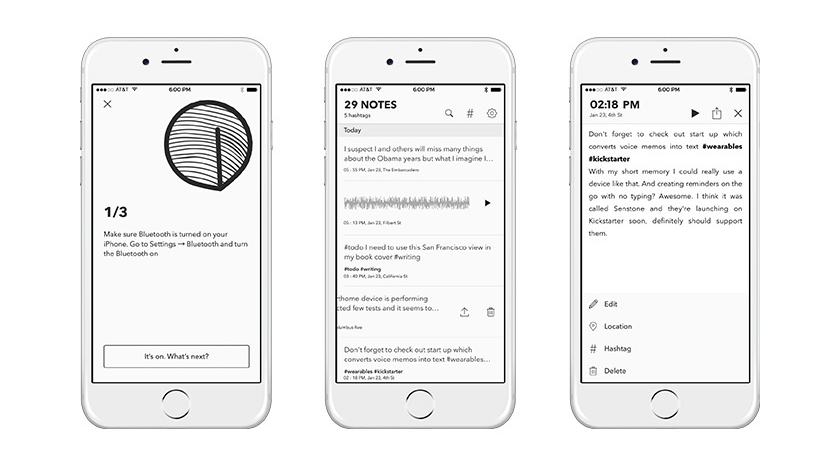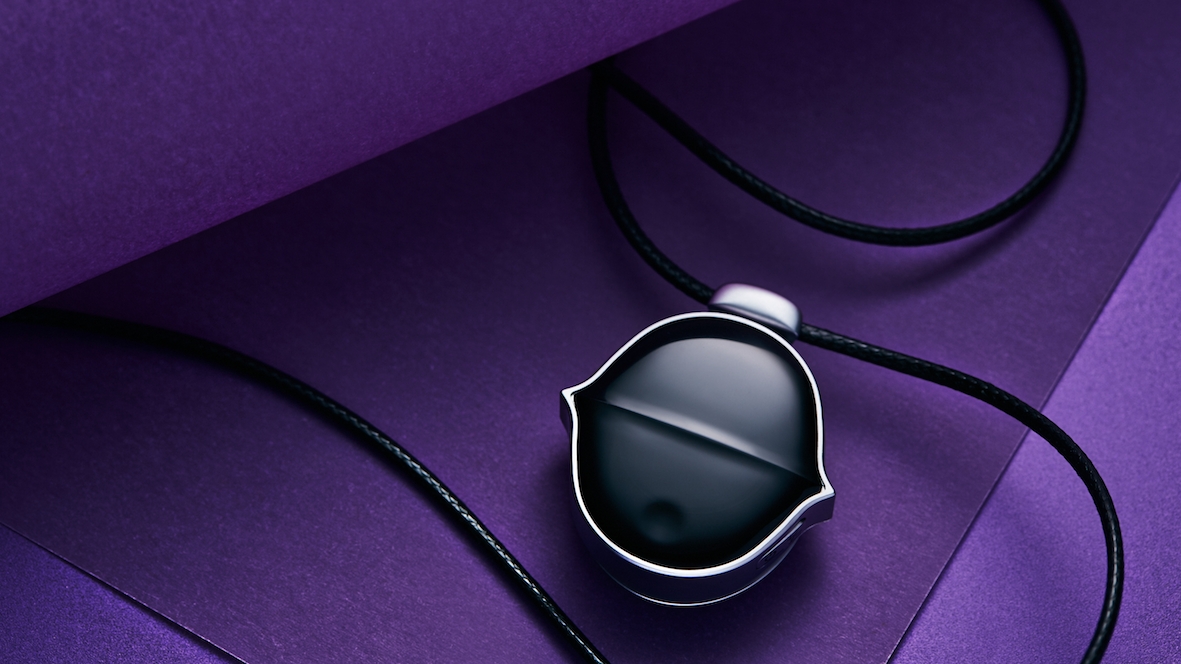Early Verdict
The Senstone is an interesting idea and the final product might be handy for some, but this prototype is far from finished.
Pros
- +
Could be useful in some situations
- +
Can be worn several ways
- +
It's likely to get better
Cons
- -
Uncomfortable
- -
Hard to remember to use
- -
Not totally accurate
Why you can trust TechRadar
The Senstone is an interesting device, designed to halt our desire to be always connected and capable of, well, everything from a single device.
Instead, this is a focused concept: if you want to record your voice for any reason throughout the day, this little unit is there to do just that.
The Senstone will sit as a lapel clip, pendant or bracelet, and whenever inspiration takes you, just tap a button on the side and it’ll begin recording.
That, in itself, sounds pretty convenient. Life would be so much easier if you could hire an assistant to always be at your side, ready to take notes and remind you when you’re supposed to buy a card for a birthday, realize that you need to move a meeting when you get back to a computer, or take down your shopping list.
But to hire such a person is both expensive and, well, would make you look like an egotistical fool. So technology is perfect in this instance.
But there’s more to the Senstone recording device than just being a voice recorder, as it’s also imbued with artificial intelligence to work out what you’re trying to say, giving context to your notes, appending location and letting you add a hashtag for easy sorting of your witterings at a later date.

Senstone pitched a ‘review’ unit for this Kickstarter concept, which is likely to become a completed product, as it’s already far exceeded its funding goal, but what we received is only a few steps above a prototype, far from the finished product, so a review is out of the question.
However, the PR that pitched this told us that when worn at CES this year it made them more productive – so apparently, even at this early stage, it could be put to the test.
We tried out the early model for a few days to see whether that claim held up, or whether this was a one-trick pony left behind by a herd of multi-faceted horses.
Design
The Senstone is a small enough product to be worn as a pendant, but it’s far from invisible. There’s a certain heft that will be OK when worn on the wrist, but in the necklace form we’re trying out it’s not the most comfortable to wear.
Nor is it fun to wear this necklace - it’s not a fashion we’re fans of anyway, and the plain black cord attached to the Senstone lacks a proper clasp, such is the early stage of the prototype. As such, the pendant is relegated to a rucksack or pocket, which makes it harder to remember it’s there.
The shiny exterior is also very much at the prototype stage, with the current plastic to be replaced with a touch-sensitive and scratch-resistant glass, making it as simple as caressing the surface of the Senstone to take a note.

The curved metal outer rim houses the microphone and the recording / power button… but that latter part isn’t really true, as we could find no way to turn the Senstone off.
That was a worry, especially given the white LED in the centre of the device is constantly blinking, but apparently it’s drawing very little battery, as even after a week off the charger the Senstone was still going strong.
Does it work?
The chunkier design would be easy to accept if the Senstone is a genuinely useful thing to have around your person daily - but would having this smart assistant always available to take a note be better than just recording the same things into a phone?
With the Google Now app being excellent at transcribing what you’re saying already (with Google Keep available on most phones) it’ll be hard to see why a standalone device would be more useful.
But it’s the convenience of it always being there that appeals, so did it make us any more productive?
In a word… no. But that’s as much to do with habit as it is the Senstone unit itself, as the impulse to record what was on our minds isn’t a natural one.
Ideas just floated in and out and we’d realize later, when putting together a daily to-do list, that we forgot to use the Senstone.
This could be to do with the fact the Senstone was secreted away in a bag or pocket rather than being worn as a pendant, but in reality it was largely to do with the moments when inspiration strikes.

The times when ideas flow the most naturally - be it your musings on a new novel or an email that you need to send later - are quiet moments when the world is slipping by. For us, this was in the shower, on a packed commuter train or out on a run.
The Senstone isn’t something we want to bring into the shower (because it’s not waterproof and, well, that’s weird) or add that heft onto a run. The social awkwardness of speaking into a necklace on a train wasn’t something we could overcome - it would be akin to the insanity of quietly donning a virtual reality headset while travelling to work.
So the usefulness of the Senstone device doesn’t feel like it’s there yet. Perhaps when the bracelet version emerges, and we’re happier to carry it around in that way, it’ll function better - but then again, smartwatches can also record your thoughts these days, and they have the added benefit of actually telling you the time too.
The app and artificial intelligence
Let’s give the Senstone the benefit of the doubt though: assuming one does find a lot of use for having such a device around, how does the voice recording work?
Surprisingly, the Senstone is not 100% accurate at capturing your speech. Google Now is great at working out your words contextually and creating correct sentences, and we expected better from a dedicated recording device.
Only speaking incredibly slowly and clearly worked, and things like ‘full stop’ and ‘comma’ need to be said out loud (although automatic grammar is coming).
While the Senstone was about as accurate as speaking into the Google Keep app, it’s not great - even when speaking evenly (and holding it the recommended distance of eight inches from the mouth) the recording wasn’t perfect.
Speaking more quietly or quickly yielded quite the drop in accuracy, and that’s likely down to the prototype unit only packing one microphone rather than two sensitive units at launch.

The app can organize your thoughts if you give them a hashtag at the start, or it can sort them by location. If you’re someone who habitually has thoughts in certain places, that’ll be useful - but that doesn’t seem that likely, and on top of that it’s hard to see why the Senstone developers need battery-sapping constant GPS access from your phone, rather than just when the app is activated.
A constant presence
The Senstone can record hours of your voice before needing to transfer the data to the phone to free up space, with a complex array of LEDs illuminating when it’s recording. In the future you’ll be able to snap your fingers in front of it to start a dictated thought, although there surely will need to be some vibration or similar to let you know it’s registered the command.
The prompts Senstone gives are a little annoying too - while it’s nice to let you know what you can do with the unit, being notified that you can use it to record your thoughts on a novel, constantly asking about your dreams or create a to do list (which it can’t do automatically, rather just taking down your items in a grammar-less sentence) isn’t helpful.
What the app needs is a reminder system that works with the phone - if you tell it that you need to buy milk, it should ping you when such an opportunity arises.
Or perhaps know when you’re most likely to have time to write and suggest you do so (maybe a period of inactivity in a certain location) - this kind of thing would really make the Senstone indispensable.
Early verdict
The Senstone is so far from a finished product that it’s almost unfair to comment on its use. The design, usability and function are all going to be upgraded hugely at launch, and as such it may suddenly warrant the $145 (roughly £120/AU$190) cost.
We didn’t find any need for the Senstone in our time with it though - without the promised AI, or the unit being 100% accurate at capturing speech, it’s hard to see how the Senstone is anything more than an expensive substitute for the phone, which can record the same things.
However, there’s more to come from this device - and we can see its use at a trade show or flitting between meetings, for instance, where the desire to record random thoughts instantly will be greater than normal (which perhaps explains why Senstone’s PR was so much more productive at CES).
We also did notice that we were aware of times when the Senstone would be more useful - it’s surprising how often during the day you could do with just locking down a thought before it wisps away into the depths of your mind like burning tissue on the wind.
There are social barriers to overcome, as well as convincing users that having this bulky little device attached in some way is a worthwhile thing - right now, it’s hard to see a use case for it in day to day life, but we’ll happily revisit the Senstone when the final models emerge.

Gareth has been part of the consumer technology world in a career spanning three decades. He started life as a staff writer on the fledgling TechRadar, and has grew with the site (primarily as phones, tablets and wearables editor) until becoming Global Editor in Chief in 2018. Gareth has written over 4,000 articles for TechRadar, has contributed expert insight to a number of other publications, chaired panels on zeitgeist technologies, presented at the Gadget Show Live as well as representing the brand on TV and radio for multiple channels including Sky, BBC, ITV and Al-Jazeera. Passionate about fitness, he can bore anyone rigid about stress management, sleep tracking, heart rate variance as well as bemoaning something about the latest iPhone, Galaxy or OLED TV.
What is a hands on review?
Hands on reviews' are a journalist's first impressions of a piece of kit based on spending some time with it. It may be just a few moments, or a few hours. The important thing is we have been able to play with it ourselves and can give you some sense of what it's like to use, even if it's only an embryonic view. For more information, see TechRadar's Reviews Guarantee.
